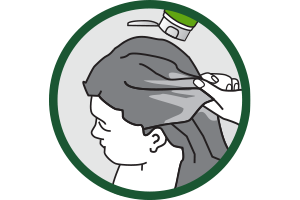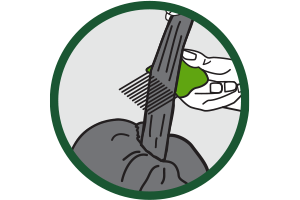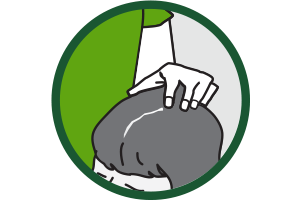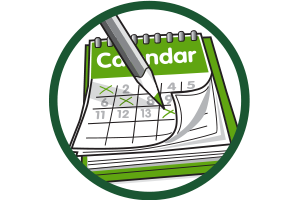Head lice are found on the hair itself and move to the scalp to feed. They have six legs which end in a claw and they rarely fall from the head.
Louse eggs (also called nits) are laid within 1.5 cm of the scalp and are firmly attached to the hair. They resemble dandruff, but can't be brushed off. Lice can crawl and hide. An easy way to check if you have head lice is to follow these steps:


Apply a generous amount of MOOV Head Lice Combing Conditioner to wet or dry hair, ensuring the hair is saturated. This stuns the lice and makes it difficult for them to grip the hair or crawl around.

Divide hair into segments. Starting at the scalp, use the MOOV Head Lice Comb to comb through the hair.

Wipe combings onto a tissue as you proceed.

Continue combing. Look on the tissue and on the comb for lice and eggs.

If an active head lice infestation is present, MOOV Head Lice Solution and MOOV Head Lice Shampoo are clinically proven to kill head lice and eggs1,2,3.
1. Greive KA, Altman PM, Rowe JS, Slaton JA and Oppenheim VMJ. A randomised, double-blind, comparative efficacy trial of three head lice treatment options: malathion, pyrethrins with piperonyl butoxide and MOOV Head Lice Solution. Aust Pharm. 2007; 26(9): 738-743. Research sponsored by Ego Pharmaceuticals.
2. Greive KA, Lui AH, Barnes TM and Oppenheim VMJ. Safety and efficacy of a non-pesticide-based head lice treatment: Results of a randomised comparative trial in children. Australas J Dermatol. 2012; 53(4): 255-263. Research sponsored by Ego Pharmaceuticals.
3. Greive KA, Lui A. Barnes TM. Oppenheim JVM. Australas J Dermatol. 2010; 51(3): 175 - 182.